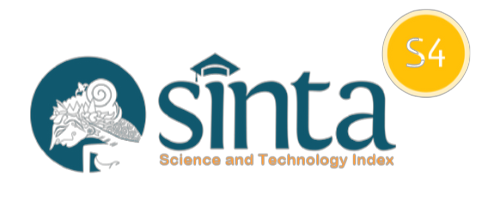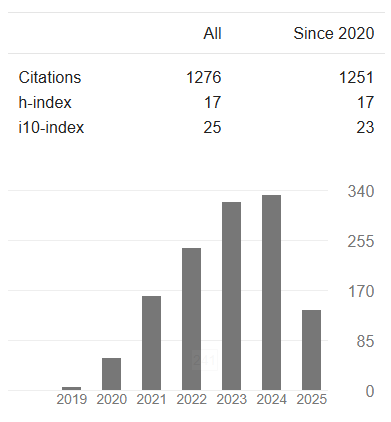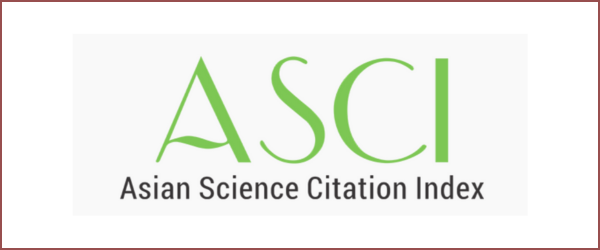Islamic Social Fund (Zakah Infaq Shodaqoh), Inflation, and Poverty Alleviation in Surabaya City
DOI:
https://doi.org/10.14421/EkBis.2023.7.1.1858Keywords:
Poverty, Receipt ZIS Funds, InflationAbstract
This study analyzes the poverty rate in Surabaya in 2016-2020 which is supported by Islamic financial instruments and macroeconomic instruments. This study aims to examine the effect of receipt ZIS funds and inflation on the poverty rate in Surabaya in 2016-2020. This study used quantitative approach with multiple linear regression tests which were processed using the Eviews 10 program. The data used is time series data with the period of this study from January 2016 to December 2020. The data source was obtained from the East Java National Amil Zakat Agency (BAZNAS) and the Central Statistics (BPS) Surabaya City. The results of this study are indicating that the ZIS variable has a significant effect with a probability value of 0.0000 and has a negative direction with a coefficient value of -0.212219. This explains that the receipt of ZIS funds at BAZNAS East Java can reduce the number of poor people from 2016 to 2020. Meanwhile, the inflation variable has no significant effect on poverty with a probability value of 0.8062, and has a negative direction with a coefficient value of -0.006093. This happened because the inflation rate which was still fluctuating had no effect on the poverty rate in Surabaya from 2016 to 2020. Then simultaneously the ZIS variables and inflation together had an effect on the poverty rate in Surabaya in 2016-2020. While the results of the R2 test in this study indicate that the poverty rate in Surabaya is explained by the ZIS variable and inflation of 40.53% and the rest is explained by other variables outside the variables examined in this study.
Downloads
 Abstract viewed: 150 times
|
Abstract viewed: 150 times
|
 PDF downloaded = 200 times
PDF downloaded = 200 times
References
Afif, Mufti, Andi Triyawan, Miftahul Huda, Arie Rachmat Sunjoto, and Ahmad Fajaruddin. 2021. Optimalisasi Pengelolaan Filantropi Islam Berbasis Masjid. Ponorogo: UNIDA Gontor Press.
Alviannor, and Eny Fahrati. 2021. “Analisis Faktor-Faktor Yang Mempengaruhi Tingkat Kemiskinan.” JIEP: Jurnal Ilmu Ekonomi Dan Pembangunan 4(1):75–87.
Anjelina, Eni Devi, Rania Salsabila, and Dwi Ayu Fitriyanti. 2020. “Peranan Zakat , Infak Dan Sedekah Dalam Meningkatkan Kesejahteraan Ekonomi Masyarakat.” Jurnal Ekonomi, Keuangan Dan Perbankan Syariah (JIHBIZ) 4(2):136–47.
Aprianti, Ayu, and Tiara Shofi Edriani. 2023. “Analisis Faktor Indeks Harga Konsumen (IHK) Menurut Kelompok Pengeluaran Yang Memprngaruhi Laju Inflasi Provinsi Lampung Tahun 2020.” Indonesian Journal of Applied Mathematics 2(2). doi: 10.35472/indojam.v2i2.1028.
Azwar. 2017. “Persistensi Inflasi Regional Di Sulawesi Selatan.” Jurnal Perbendaharaan, Keuangan Negara Dan Kebijakan Publik 2(1):9–25.
Dr, Oni Sahroni, H. Muhammad Suharsono, Dr. Agus Setiawan, and Adi Setiawan. 2019. Fikih Zakat Kontemporer. Depok: Rajawali Pers.
Hambarsari, Dwi Puspa, and Kunto Inggit. 2016. “Analisis Pengaruh Pertumbuhan Ekonomi, Pertumbuhan Penduduk Dan Inflasi Terhadap Tingkat Kemiskinan Di Jawa Timur Tahun 2004-2014.” Jurnal Ekonomi Dan Bisnis 1(2).
Hartono, Nono, and Mohamad Anwar. 2018. “Analisis Zakat Produktif Terhadap Indeks Kemiskinan, Nilai Material Dan Spiritual Para Mustahik.” Jurnal Ilmiah Ekonomi Islam 4(03):187. doi: 10.29040/jiei.v4i03.324.
Ismardi, and Arisman. 2015. “Telaah Fiqh Siyasah Dan Patologi Sosial Terhadap Konsep Zero Kemiskinan Dalam Lima Pilar Pembangunan Kabupaten Kampar.” Hukum Islam 15(1):1–27.
Istan, Muhammad. 2017. “Pengentasan Kemiskinan Melalui Pemberdayaan Ekonomi Umat Menurut Perspektif Islam.” Al-Falah: Journal of Islamic Economics 2(1).
Jarot, Raharjo Eko, Juliani Pudjowati, and Abdul Fattah. 2020. “Analisis Faktor-Faktor Yang Mempengaruhi Tingkat Inflasi Di Jawa Timur.” EkoBis: Jurnal Ekonomi & Bisnis 1(2):98–108. doi: 10.46821/ekobis.v1i2.33.
Kristinae, Vivy. 2018. “Analisis Pengaruh Indeks Harga Konsumen Terhadap Inflasi (Studi Kasus Pada Inflasi Kota Palangka Raya Dan Kab. Sampit Di Kalimantan Tengah).” Jurnal Aplikasi Manajemen, Ekonomi Dan Bisnis 3(1):1–11.
Mahendra, A. 2016. “Analisis Pengaruh Jumlah Uang Beredar, Suku Bunga SBI Dan Nilai Tukar Terhadap Inflasi Di Indonesia.” JRAK 2(1):1–12.
Rahman, Miftahur, and Masrizal. 2019. “Peran Zakat Dalam Mengentaskan Kemiskinan Di Indonesia.” Hukum Islam XIX(2):130–48.
Rini, Ayu Setyo, and Lilik Sugiharti. 2016. “Determining Factors Of Poverty In Indonesia : Household Analysis.” JIET: Jurnal Ilmu Ekonomi Terapan 1(2):80–95. doi: 10.20473/jiet.v1i2.3252.
Rosana, Ellya. 2019. “Kemiskinan Dalam Perspektif Struktural Fungsional.” Al-Adyan 14(1):19–34.
Setiawan, Denil. 2019. “Analisis Zakat Sebagai Instrument Kebijakan Fiskal Pada Masa Khalifah Umar Bin Khattab r. A.” Al Amwal 1(2):118–31.
Silfiah, Dasi, and Aslich Maulana. 2018. “Penerapan Program Zakat, Infaq, Dan Sedekah (ZIS) Di Dusun Jedong Desa Sekar Putih Kecamatan Balongpanggang Gresik.” Jurnal Tamaddun (2).
Siregar, Syarifah, and T. Masri. 2019. “Teori Inflasi Menurut Al-Maqrizi.” Jurnal Perbankan Syariah 2(1):60–67.
Sofyan, Syaakir. 2018. “Peran Lembaga Zakat Dalam Pengentasan Kemiskinan Di Indonesia.” Jurnal Bilancia 12(2).
Statistik, Badan Pusat. 2022. “Jumlah Penduduk Miskin Di Indonesia September 2021.” BPS - Statistics Indonesia. Retrieved (https://jatim.bps.go.id/pressrelease/2022/01/17/1307/persentase-penduduk-miskin-september-2021-turun-menjadi-10-59-persen.html).
Tulak, Dewi Yuliastuti, Junaidi, and Iut Tri Utami. 2017. “Penerapan Autoregressive Distributed Lag (ARDL) Dalam Memodelkan Pengaruh Indeks Harga Konsumen (IHK) Kelompok Bahan Makanan Dan Kelompok Makanan Jadi Terhadap Inflasi Di Kota Palu.” Natural Science: Journal of Science and Technology 6(3):313–20.
Utami, Rahayu Budi. 2020. “Analisis Pengaruh Angka Beban Ketergantungan, Kepadatan Penduduk, Garis Kemiskinan Terhadap Indeks Gini Di Indonesia.” Medical Technology and Public Health Journal 4(2):212–23. doi: 10.33086/mtphj.v4i2.806.
Yuliana, Yulfrita Adamy, and Chelliana Adhila. 2019. “Pengaruh Dana Zakat Infak Dan Sedekah (ZIS) Terhadap Kemiskinan Di Kabupaten/Kota Provinsi Aceh.” Jurnal Ekonomi Dan Kebijakan Publik Indonesia (EKaPI) 6(2):203–14.
Downloads
Published
How to Cite
Issue
Section
License
Copyright (c) 2023 Nabilah Balqis

This work is licensed under a Creative Commons Attribution-ShareAlike 4.0 International License.





























 This work is licensed under a
This work is licensed under a 